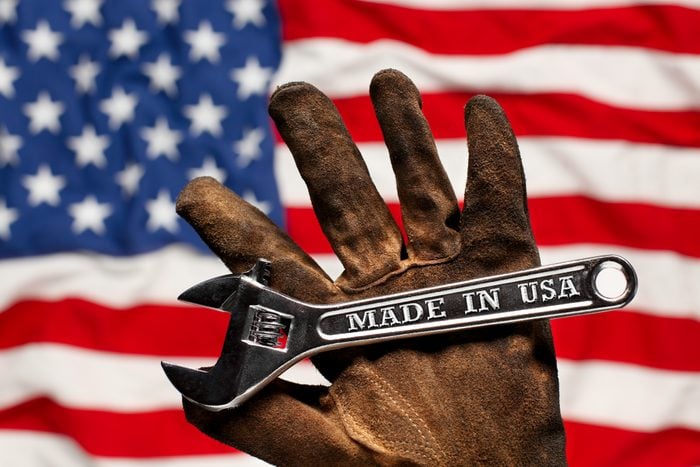Why Is It So Hard to Make Affordable Tools in America?
Updated: Nov. 14, 2023

Searching for and finding American-made tools can be a challenge. Here's why.
Made in the USA. Decades ago, you could find this designation on practically anything.
The United States dominated global manufacturing markets, exporting tools, clothing, automobiles and everything that went into making them. Towns, cities and entire regions rose around industry. American-made tools and other manufactured goods, as well as many of the people who made them, flourished.
If you’ve taken a peek lately at product labels or shopping websites, you know finding Made in the USA isn’t as easy as it used to be. Starting in the mid-1970s, a century of trade surpluses shifted to year-after-year deficits. Many goods once made here are now manufactured in other countries to reduce production costs, increase profits and lower consumer prices.
Then the COVID-19 pandemic exposed vulnerabilities in global supply chains. Tensions between the U.S. and China made companies reconsider domestic production. “Reshoring” initiatives, prompted by consumers and trade groups concerned about job losses and the environmental and human rights impacts of offshoring, find companies trying to convince Americans they can be part of the solution.
The Story of the Craftsman Wrench Factory in Texas

In 2019, Stanley Black & Decker, Inc., owner of the Craftsman brand of tools, announced plans to open a state-of-the-art facility in Fort Worth, Texas to manufacture hand tools.
The heavily-automated facility promised to bring 500 skilled manufacturing jobs to the area. In a statement at the time, the company promised to “leverage some of the most advanced manufacturing technologies available to optimize productivity and sustainability.”
Recently, however, Stanley Black & Decker announced it will close the plant, laying off or transferring 175 workers. The closure is part of a larger strategy to streamline and consolidate, according to a company statement. It accompanied news of another plant closure and operational changes.
So what happened in Fort Worth? Company executives point to multiple challenges in and out of their control.
“We endeavored to make Craftsman mechanics tools in a new and innovative way,” saus Lindsay Fennell, Stanley Black & Decker senior manager of public relations. “The events of COVID and supply chain challenges, coupled with technology that did not meet our expectations, resulted in the discontinuation of operations.”
Here’s Why It’s Hard To Make Affordable Tools in the U.S.
One plant closure doesn’t make a pattern, but the market share for U.S.-manufactured hand tools declined 7.6% in 2022. Overall, domestic manufacturing has been rising after the Great Recession and pandemic, with many companies, including Stanley Black & Decker, operating multiple plants stateside. (The company employs 19,000 employees at 40 U.S. manufacturing facilities.)
But bringing more tool plants — and jobs — back to the U.S. will take a concerted, multi-faceted effort by government, businesses and consumers.
Here are some obstacles to reshoring tool manufacturing:
- Higher labor costs: Companies offshored production to reduce costs, so paying more for American labor without raising prices is a significant hurdle.
- Rebuilding supply chains: Tools, like other manufactured goods, have specialized supply chains that must be reestablished after suppliers followed producers overseas. Investing in a revamped “industrial commons,” where knowledge, materials and tools can be quickly (and domestically) accessed, is key.
- Cost competitiveness: Consumers are used to paying less for goods online and at big box stores. It’s hard to stay competitive amid demands for low prices.
- Labor shortages: Decades of shifting manufacturing jobs overseas left gaps in readily-available expertise. Membership in labor unions that train highly-skilled workers continues to decline. The emergence of groups like the Reshoring Initiative, which operates a Skilled Workforce Development Program, demonstrates the ongoing need to promote and train American workers.
- Regulatory issues: Depending on who you ask, regulations can be too friendly to business or a hindrance to company growth. Regulations that favor overseas production can make it harder for companies to open plants in the U.S.
- Political will: The drop in U.S. manufacturing didn’t happen overnight. Bringing tools and jobs back to America requires a comprehensive political strategy. Executive orders, subsidies, tariffs and tax incentives are a few tools governments can use to influence manufacturing and import/export decisions.
